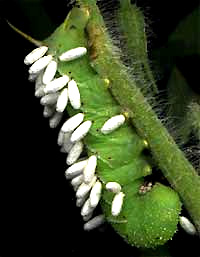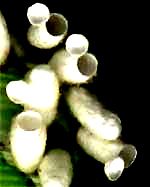

English Name: Carpenter Ant
Family: Formicidae
Genus: Camponotus
Species: ?
The above ant clearly has no wings, so you might wonder why it's a member of the Hymenoptera order, famous for its members having hindwings smaller than its forewings. Well, remember that ants are social insects with different castes. Queens and males are usually winged but the workers are wingless. Workers are what we usually see, and that's a worker above. In the ant world -- the Ant Family, the Formicidae -- there are fire ants, harvester ants, mound-building ants, field ants, carpenter ants such as the one above, and many others. Carpenter ants feed on dead and living insects, aphid and scale honeydew, and juices of ripe fruit -- especially sweet juices. They bore into wood when making their nests, leaving piles of sawdust-like frass outside the nests. You might be interested in the University of California's Illustrated Key to Identifying Common Household Ants. Here's part of what makes the above ant a carpenter ant:
 English Name: Large Carpenter Bee
English Name: Large Carpenter Bee
Family: Apidae (carpenter bees, bumble bees, honey bees... )
Genus: Xylocopa
Species: virginica
This large bee is similar to the bumble bee, except that this species has a black spot in the middle of its back, plus its rear end is black. Bumble bees don't have the black spot, and their rear ends bear a broad, yellow band of fuzz. One neat thing about this picture is that you can see that, like all Hymenoptera with wings, it has two pairs -- four wings in all. See the smaller wings just above the big lower ones? Carpenter bees take their name from the fact that they place their nests in deep chambers in wood. They dig the chambers themselves, using their complex mouth parts to chew the wood. In the spring when they are excavating their tunnels you can find little piles of sawdust lying below where they work. In our backyards they well may decide to put a nest in a wooden picnic table, or anything built of untreated lumber! They are interesting insects, fun to watch, and won't sting unless molested.
 English Name: Braconid Wasp
English Name: Braconid Wasp
Family: Braconidae
Genus: ?
Species: ?
In the picture at the right, the green caterpillar is a Tobacco Hornworm, not the braconid wasp we're talking about. What is the braconid wasp is found inside each of those little white, silken cocoons stuck to the poor caterpillar's exterior. The story is that the female wasp stings the caterpillar and deposits a number of eggs just beneath his skin. The eggs hatch into young wasp grubs that then tunnel through the caterpillar's body feeding on fatty tissues. When the wasp grubs are ready to metamorphose they emerge from beneath the caterpillar's skin and weave themselves into those little white cocoons you can see  standing on end all over the hornworm’s back. Needless to say, this hornworm was not feeling very healthy when I got his picture. Though he will help a lot of braconid wasp grubs metamorphose into adult braconids, he himself will never metamorphose into a sphinx moth, for he will die. In fact, because Tobacco Hornworms eat tomato plants, gardeners often buy large numbers of braconid wasps to biologically control hornworms -- get rid of them without using poisonous chemicals! At the left you see a close-up of some of the same cocoons on the same hornworm pictured above a week later, after pupae had cut their way out of the cocoons and escaped as adults. The tops of the empty cocoons hang like lids. One cocoon may be in the process of being opened from the inside. The hornworm, though it had not moved from its position in days, was still alive...
standing on end all over the hornworm’s back. Needless to say, this hornworm was not feeling very healthy when I got his picture. Though he will help a lot of braconid wasp grubs metamorphose into adult braconids, he himself will never metamorphose into a sphinx moth, for he will die. In fact, because Tobacco Hornworms eat tomato plants, gardeners often buy large numbers of braconid wasps to biologically control hornworms -- get rid of them without using poisonous chemicals! At the left you see a close-up of some of the same cocoons on the same hornworm pictured above a week later, after pupae had cut their way out of the cocoons and escaped as adults. The tops of the empty cocoons hang like lids. One cocoon may be in the process of being opened from the inside. The hornworm, though it had not moved from its position in days, was still alive...
 English Name: Paper Wasp
English Name: Paper Wasp
Family: Vespidae (Vespid wasps)
Subfamily: Polistinae (paper wasps)
Genus: Polistes
Species: cf. fuscatus, maybe
exclamans
The critter at the right stung me on the neck and when I reflexively swatted I killed her, which I regretted, especially because she's so pretty. Now, there are several wasp families of which the Vespidae is just one. The Vespidae, or Vespid Wasp Family, is a huge one. All this means that when using the typical field guide usually it is impossible to figure out which species you have. In fact, you're lucky if you can identify it to genus. However, if you have a good field guide you should be able to identify it to subfamily. In North America the Vespidae is represented by seven subfamilies, the most common being the Vespinae (yellowjackets and hornets) and the Polistinae (paper wasps). Happily, one day entomologist Joy Layton saw the above picture and identified it as Polistes cf. fuscatus. The "cf." in the scientific name means "confirm." In other words, Dr. Layton wasn't sure that it was Polistes fuscatus, but that was a good educated guess. Dr. Layton also wrote that "Polistes females are tenacious hunters of caterpillars which they kill and butcher, to bring pieces back to the nest for the helpless larvae to feed on."
 English Name: Hornet nest
English Name: Hornet nest
Family: Vespidae (Vespid wasps)
Subfamily: Vespinae (yellowjackets & hornets)
Genus: ?
Species: ?
The nest at the right was found in an old barn in southwestern Mississippi. In the picture, the yellow-framed inset at the lower left shows a view up through the nest's hole. You can just barely see the hexagonal cells inside the nest, where eggs are laid, the larvae develop, and the pupae metamorphose. Dr. Layton, who was introduced above, also informs me that "The paper wasps [Polistinae] have those 'open' nests which are often found in porches and under the eaves of houses, unlike the closed nests of the Vespinae which are usually in trees (hornets), or underground (yellow jackets)."
 English Name: Potter Wasp nest
English Name: Potter Wasp nest
Family: Vespidae (Vespid wasps)
Subfamily: Eumeninae (potter wasps)
Genus: ?
Species: ?
Notice that this is the same wasp family as the above two, but a different subfamily. Though the wasps may look vaguely similar, their nests are profoundly different. The nest at the right, instead of being made of paper, is made of mud. In that picture you are seeing a tiny "pot" made of mud, stuck on the side of a vertical dirt cliff. Usually such nests are provisioned with caterpillars for the wasp larvae to eat when they hatch. The world of wasps is one of the most diverse, surprising and interesting in the entire animal kingdom!